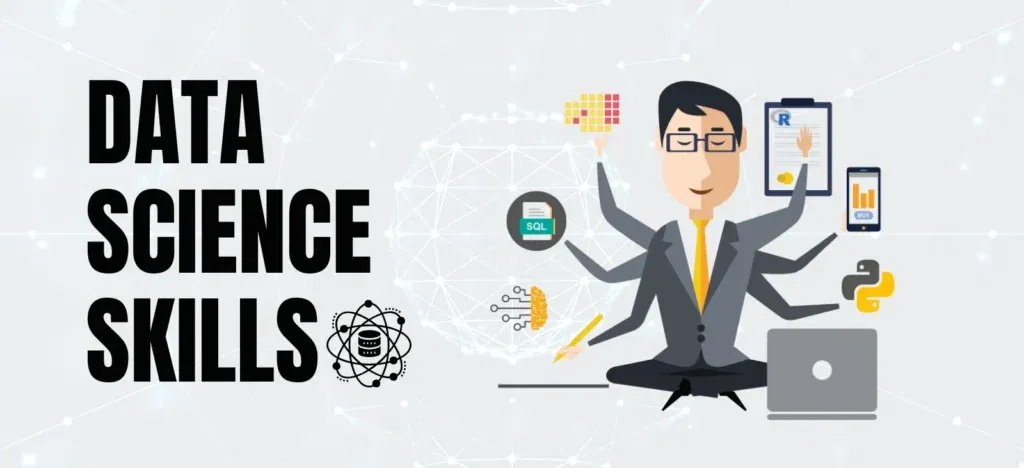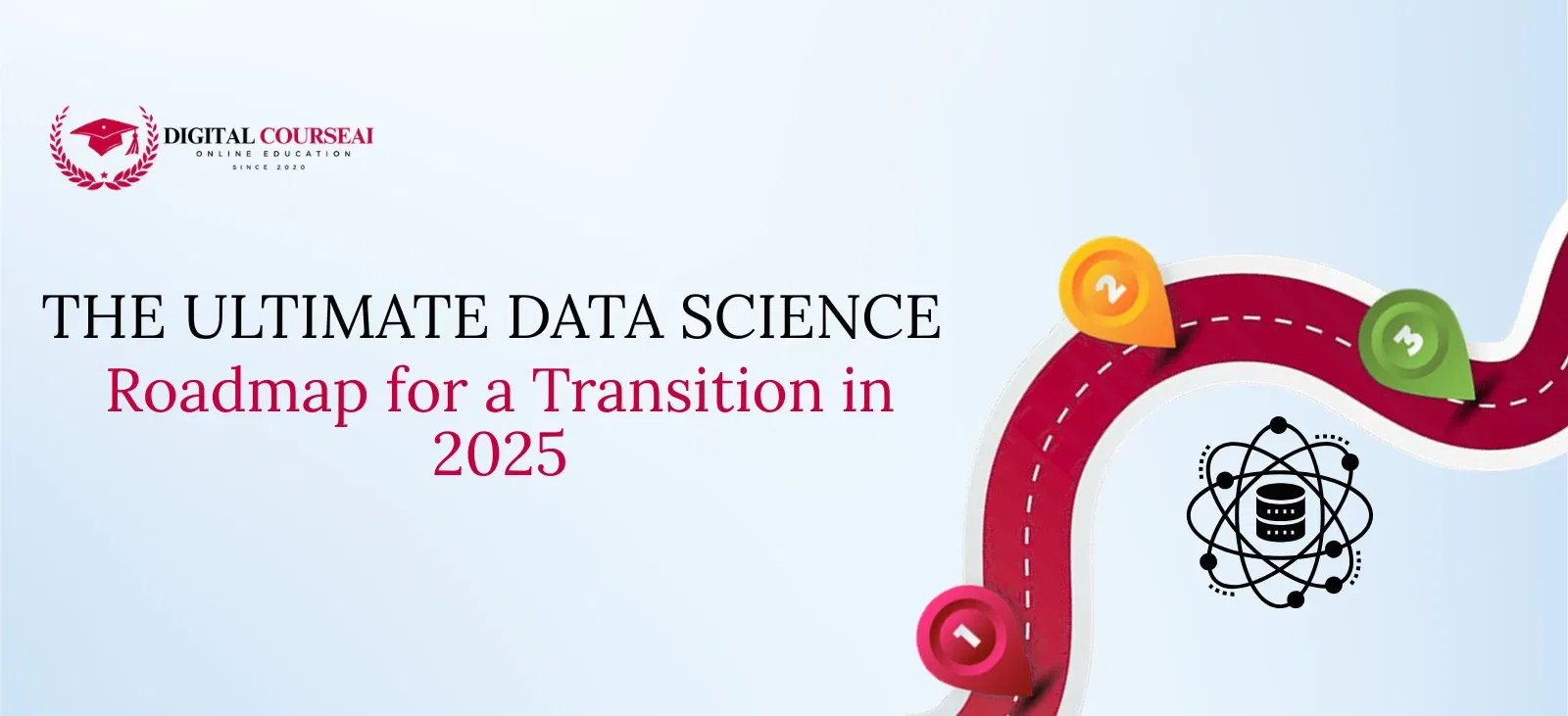Introduction
The world of data science is rapidly advancing and remains one of the most popular. This Data Science Roadmap rewards professions of the 21st century.
As we imagine the future state of data science in 2025, demand for specialists. Those who can sift through massive amounts of data. Finding pertinent information is higher than ever before.
It would help you if you had a plan to transition into a career in data science. Whether you are at the start of your career or looking for a dramatic change in your current role.
This article will help you gain a full understanding of the systematic approach. To a career path in data science with a rich data science roadmap to help you take the leap and land your dream job.
Three-Phase Career Development of Data Science Roadmap
Phase 1: Laying the Foundations
The first phase in any transition to a data science career is building your core foundations. You will not be successful if you simply want to jump right into algorithms.
Although machine learning models are before you to build a solid foundation in the core disciplines of the data science field.
Mathematical & Statistical Essentials
Data science is entirely applied mathematics and statistics! If you are intimidated by this, have confidence and build up to it. You need to be confident in your mathematics and statistics abilities.
To understand how algorithms are implemented in machine learning and understand their outcomes.
- Linear Algebra: Required study for understanding how to manipulate and transform data. Learn to be confident in thinking about vectors and matrices. As that will provide the data representation vocabulary.
- Calculus: Important for developing an understanding of optimisation algorithms. That function trains the model in machine learning. You will be working with many algorithms that involve derivatives and gradients.
- Probability & Statistics: These are the foundations of data analysis. You will want to be fluent in using and speaking about concepts. Such as probability distributions, hypothesis testing, regression analysis, etc,. If you expect to make decisions and predictions from your data!
Programming Proficiency
Data science is a practical field, and the main tool you will use in your practice of data science is programming. While there are many programming languages. Like Python and R are the standard languages within the field of study.
- Python: Virtually the king of data science. Its libraries include NumPy, Pandas, Scikit-learn, and Matplotlib. This makes it an effective tool for data manipulation, analysis, and visualisation.
- R: Also widely used in academia, especially for statistical analysis and data visualisation.
- SQL: Structured Query Language is needed for anyone engaging in data. You need to know how to write queries to pull, manipulate, and manage data that is stored in a database.
- Git & GitHub: learn version control. Git is the standardized way to work collaboratively, manage your work and its changes, and collaborate with others.
Phase 2: Core Data Science Skills

Once your foundations are solid. The next step in your data science roadmap is to develop the core technical abilities. Particular to your role, this stage focuses on the doing part of your foundational knowledge.
Data Wrangling and Exploration
This is where it all starts to happen. Real-world data is messy, and much of what a data scientist will do every day involves cleaning. Likewise, “wrangling” data and preparing it to be analysed.
- Data Collection: Understanding how to pull data from several different sources. Whether it was from an API or web-scraped, or connecting directly to a database.
- Data Cleaning: Handling null values, duplicating data, and inconsistencies.
- Data Transformation in Data Science: The critical step of transforming data from its raw state into an analysis-ready state. Methods for data transformation include feature scaling and encoding categorical variables.
Also, it is creating new features through feature engineering. This is a game-changer between junior and senior data scientists.
- Exploratory Data Analysis (EDA): This is the process of using statistical analysis and visualisation. To allow you to see the main features of a dataset and understand it better.
Tools like Tableau, Power BI, and Python’s Matplotlib and Seaborn libraries are a must for this stage.
Machine Learning & Modelling
This is often one of the most exciting parts of the process. Machine learning is the beating heart of predictive analytics.
- Fundamentals: Get started with the basics of supervised versus unsupervised learning. All the variations of regression, classification, and clustering tasks.
- Algorithms: Learn many different types of algorithms, from basic ones. Such as linear regression and K-means clustering. Too many more complicated algorithms, such as random forests and gradient boosting machines.
- Deep Learning: Learn about neural networks to take on tasks with unstructured data (images, audio, and text).
- Natural Language Processing (NLP): Learn about processing and analysing text data. The demand for NLP skills in many industries is increasing and can lead to lucrative careers.
Phase 3: Building a Professional Presence
Learning the skills is only half the battle. In preparing for a data science transition, you will need to prove these abilities. Like to potential employers, so doing that requires you to stand out from the rest.
Portfolio Projects
The portfolio is your resume. It is a way to showcase that you have practical skills with the ability to solve real-world problems.
- Start with the Basics: Try taking on portfolio projects from start to finish. This includes the entire process of the data science lifecycle. Besides, including data collection, data cleaning, modelling, and deployment.
- Show Your Breadth and Depth: Work on a variety of projects that prove various skills in different areas. For example, a predictive model, a dashboard data visualisation, or an NLP project.
- Tell a Story: Don’t just show the code. Tell a story about how you approached the problem and the challenges you faced. Also, the business or organizational implications of the results you obtained.
Networking and Skill Development
The data science community is incredibly active and engaged. Join it if you haven’t already, because it’s a community of like-minded individuals. It can be a wonderful source of learning and opportunities.
- Online Communities: Take part in social media communities such as Kaggle, GitHub, and Stack Overflow.
- Networking: Attend meetups, conferences, and webinars. To meet others and learn about what people are doing in the data science world.
- Continuous Learning: Data science is an always-changing field! Continue to learn the best data science course in Gurgaon. Keep up with what is happening in academia; read recently published research papers and courses.
Final Thoughts on Your 2025 Transition
Becoming a data scientist may not be a simple task. Yet, the benefits and impact you can provide should be very fulfilling work. The journey into the data science roadmap is not a linear path. It is a strong cycle of learning and practicing and making.
If you have some basic technical knowledge and problem-solving experience. Combined with a solid job presence. You can make the transition into the data scientist world. Also, have a career in the most enjoyable area of work for 2025.
Get yourself started and be consistent. Also, remember that every line of code and every cleaned data set. Every single good predictive model is still progressing toward your milestones!

